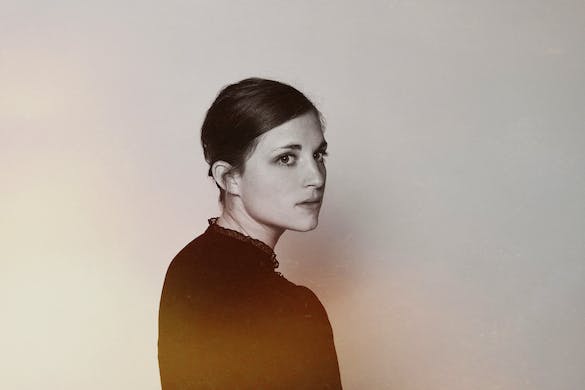Perceptions of Disability Take Center Stage in ‘Left and Right’
As I watched, I realized we, as an audience, still have everything to learn about physical impairment.

Myths have long persisted about the left and right sides of the body, and their associations with good and evil. The Latin word “sinister” translates to “on the left hand side,” and Christian traditions have pinned the left side to immorality since Eve appeared at Adam’s left side in Genesis. As time progressed, thought leaders associated left-handedness with witchcraft, demonic possession, and then anomaly; a physical marker of deviousness that could be coached away with behavioral therapy.
The right-hand side, by comparison, was considered good, healing, even beneficent.
This concept grasped composer and performer Molly Joyce, whose relationship with left and right has been fraught for nearly 15 years — since a serious car accident nearly amputated her left arm, leaving it permanently disfigured. “When I was younger, after the accident, I used to wear long sleeves in the heat to try and normalize myself as much as possible,” Ms. Joyce said.
Over time, though, she began to view her disability as a creative prompt. In graduate school, she began to experiment with her instrument of choice, the electric vintage toy organ. “I realized that it was made for my body,” she said, “and I started reading more about disability as a social construction.” It motivated her to realize the creative potential in the issues and complexities that emerge from a disabled performer on-stage. “I loved thinking about that, and how to pursue that creatively. For me, it was this infinite well of creativity.”
When she was granted the 2021 Toulmin Fellowship with National Sawdust and New York University Center for Ballet and the Arts, she knew she wanted to explore this concept. The caveat? She had to include a dancer in her piece. She knew immediately who her collaborator would be.
“Jerron and I met on LinkedIn,” she said with a chuckle about choreographer and dancer Jerron Herman. “I feel very fortunate to evolve with him as an artist and collaborator. We also have this unique body set up, him through congenital disability, mine acquired.” His disability also affects his left side.
“Left and Right” began as Covid art, and was first presented in 2021 as a part of Sawdust’s quarantine-era Digital Discovery program, utilizing cinematography, poetic audio description, choreography, and composition. Now, Ms. Joyce and Mr. Herman have taken it to the stage at “The Future Is…Festival and Creative Forum,” in collaboration with writer and audio describer Max Greyson and director Austin Reagan.
The audience in Sawdust’s innovative space is divided left and right, signaling the theme. The creative team’s conscientiousness is evident in the piece’s many layers of accessibility — two American Sign Language interpreters (one is deaf herself), a screen reader voice, and general venue accessibility on the main floor. The audio describer provides live commentary and vignettes to preview the research and motivation behind the piece’s three acts.
The acts, titled “Dualism,” “Overuse/Underuse,” and “Asymmetry” use Mr. Herman’s literal, sweeping movements, Ms. Joyce’s droning, complex compositions, poetic commentary, and additional theatrical elements to confront our own personal perceptions of disability. The audience is heavily involved, with polling incorporated after each section. Questions are asked of us: “What does balance mean to you?” Answers appear in a screen reader software.
“We’re trying to encourage people to get onto their phones, the things you’re not classically supposed to do,” Ms. Joyce said. “We’re trying to ease that tension, in a way.”
As I watched, I realized we, as an audience, still have everything to learn about physical impairment. “I still feel like it’s not talked about or considered in a high-profile context. Presenters don’t know how to make sense of incorporating accessibility into their work, either. It always feels like the disabled artist has to teach the presenter about that fight for that in the budget, etc. There’s a lot of barriers there, or things to work on.”
Yes, a musician’s greatest fear is having a disability. But it’s also an opportunity. Can we, the audience, learn to see it that way?

